a bit more about ALLEGIANCE
Author's Notes & Featured Creatures
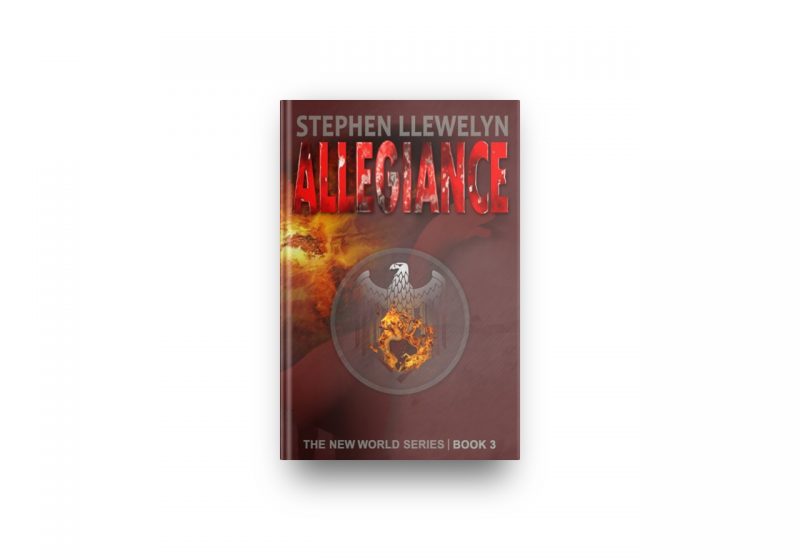
ACKNOWLEDGEMENTS
To everyone working in the field of natural history and dinosaur research, I once again send a massive thank you for your constant inspiration.
As always, a few liberties have been taken…
ABOUT THE CREATURES
Ornithocheirus and Anhanguera were vast flying reptiles (pterosaurs), and related. Size estimates for Ornithocheirus are still disputed, but range anything up to 12m across the wing – although other researchers believe they may have been little more than half that size and very comparable to Anhanguera in that respect also. Both animals probably lived a little earlier than the setting for ‘Allegiance’ – perhaps as much as 10 million years further back, hence Tim’s comment, “Ornithocheirus, or one of his relatives.” Ornithocheirus remains have been found in Britain and Anhanguera in north-eastern Brazil (either side of the fictional island where our heroes discover them off the west coast of Africa).
For animals that fly and eat fish, it must be a palaeontologist’s nightmare to guess where they were actually from! I chose to feature Ornithocheirus because it is so well known from the BBC’s Walking With Dinosaurs series. Sometimes it’s nice to be able to provide an actual face to a name! Although a flying pair do feature on the cover of the next novel in the New World Series, ‘Reroute’ (Oops! Spoiler alert!).
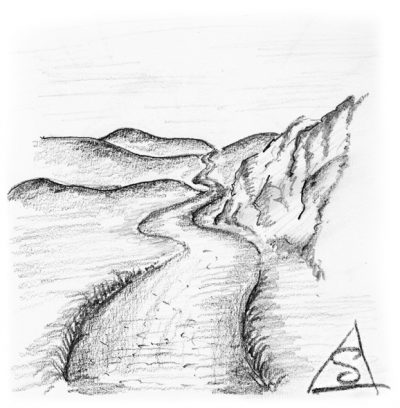
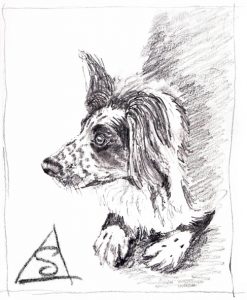
Cronopio (the little critters that savaged Henry’s trousers) were small mammals. Probably no larger than terriers, one of the palaeontologists who discovered them described Cronopio as bearing a marked resemblance to ‘Scrat’ – the cute and immensely industrious little chap that chased the ever-elusive acorn in the film Ice Age.
The idea that they behaved in a very dog-like manner was a complete liberty on my part, for the sake of the story – but then, if those ancient mammals had come across a pack of wild humans, maybe they would have developed a symbiotic relationship and, dare I say it, become friends in an age of deadly reptiles?
STAND OFFS
I try and stay away from gladiatorial contests among the dinosaurs. As stated on previous occasions, large predators, then as now, may have made a lot of noise when defending their territories, but would most likely have avoided direct conflict with one another. Injury could so easily mean death. However, a few scraps must have happened down the years – what a tremendous piece of good fortune that one such occurred while a couple of our heroes just happened to be crossing the river, so we got to see it!
Ekrixinatosaurus was a relative of the much more widely known Carnotaurus sastrei. As depicted in my amateurish sketch at the head of chapter 8, its arms were almost completely vestigial and probably useless. Subsequently, not being able to reach to cover his ears was a really cheap gag, but sometimes you just have to go with the classics. However, what I really like about this animal is its size. Unlike the behemothic Mapusaurus or Oxalaia, Ekrixinatosaurus was small enough to easily follow you through a forest and would likely have had the stamina to go all day – nowhere to hide – shudder.
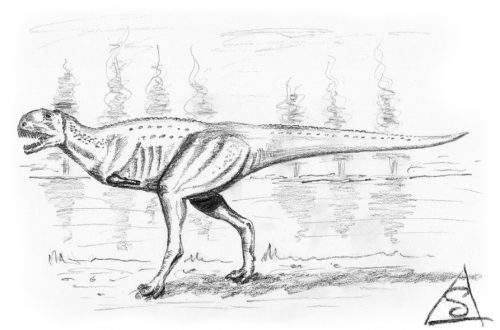
THE BAD GUYS
Talking of shudders, the fanatical Emilia Franke’s ship, the Heydrich, was named after Reinhard Heydrich, one of the main architects of the Holocaust. Considered one of the worst of a very rotten bunch within the Nazi leadership, it is fair to say that few have left such a trail of murder and chaos in their wake – millions dead. Even Hitler took this man very seriously, describing him as “the man with the iron heart”. Fortunately, in 1942 he got what he deserved. History crucially remembers these monsters in order to provide future generations with a chance at stopping the next one. In the past they have tended to rise from a world where the vast majority of people are afraid, or simply consider it wise or easier, to hide their real thoughts from view. Within his Cicero Trilogy, Robert Harris wrote a lovely little piece where Cicero says something to the effect of ‘we only have the knowledge of our own lives, but if we read history, we can call on the wisdom and knowledge of generations’.
The ‘Schutzstaffel’ was more commonly known as the infamous ‘SS’, a major paramilitary organisation under Adolf Hitler and the Nazi Party.
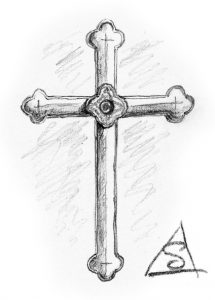
The Eisernes Kreuz (Iron Cross) was a medal for valour and service to one’s country (in Germany). Unfortunately, it is commonly tainted with association to the Nazi movement (the Nazi iron cross can be differentiated by the swastika emblem at its centre), but the honour goes back much further; in fact all the way to the Napoleonic era, and was awarded to some very courageous men and women who were most certainly not Nazis. The idea of Heinrich Schultz identifying himself with such an icon seemed entirely in keeping with the deluded self-importance of his character – the man was not even German!
The German people are, and have always been, clever and industrious. The Nazis are in no way synonymous with them. However, when it comes to writing ‘bad guys’ for the purpose of fiction, they don’t come much ‘badder’ than the Nazis, do they? After all, where would our much beloved Indiana Jones have been without them?
THANK YOU
Once again, thank you so very much for reading,
Stephen



